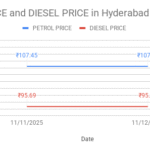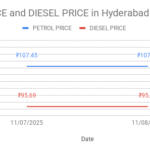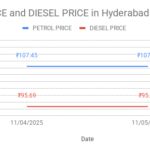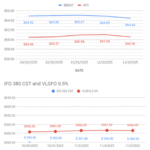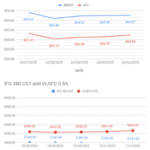CNG
Compressed natural gas is natural gas under pressure which remains clear, odorless, and non-corrosive. It is also a cheaper, greener, and more efficient alternative to the traditional petrol and diesel fuels for vehicles.
The use of natural gas as a transport fuel has two environmental advantages:
- Natural gas is a clean burning fuel,with very low NOx and soot emissions, therefore substantially improving the local air quality.
- Natural gas produces less CO2 for every unit of energy consumed by the vehicle.
CNG is comprised of:
- Mostly methane gas which, like gasoline, produces engine power when mixed with air and fed into your engine’s combustion chamber.
- When CNG reaches the combustion chamber, it mixes with air, is ignited by a spark and the and the energy from the explosion moves the vehicle.
- CNG is compressed so that enough fuel can be stored in your vehicle to extend driving range, much like the gasoline tank in a vehicle.
- Although vehicles can use natural gas as either a liquid or a gas, most vehicles use the gaseous form compressed to 3,000 psi.
Advantages of CNG
- Green Fuel
Commonly referred to as the green fuel because of its lead and sulphur free character, CNG reduces harmful emissions. Being non-corrosive, it enhances the longevity of spark plugs. Due to the absence of any lead or benzene content in CNG, the lead fouling of spark plugs, and lead or benzene pollution are eliminated.
- Safe Fuel
The properties of CNG make it a safe fuel. It is stored in high gauge seamless cylinders which are certified with a negligible chance of leakage. It is lighter than air, so in case of leak it just rises up and disperses into the atmosphere and mixes in the air easily and evenly.
- High auto ignition temperature
CNG is less likely to auto-ignite on hot surfaces, since it has a high auto-ignition temperature (540 degrees centigrade) and a narrow range (5%-15%) of flammability. It means that if CNG concentration in the air is below 5% or above 15%, it will not burn. This high ignition temperature and limited flammability range makes accidental ignition or combustion very unlikely.
- Low operational cost
The operational cost of vehicles running on CNG, as compared to those running on other fuels, is comparatively low.
- Dual facility
CNG vehicles can run both on CNG and Petrol.
- Increased life of oils
Another practical advantage observed is the increased life of lubricating oils, as CNG does not contaminate and dilute the crankcase oil.
Why is CNG better than traditional petrol?
- CNG is one of the most viable alternatives to traditional liquid fuels for vehicles here in Trinidad and Tobago.
- CNG is one fifth the price of super gasoline, resulting in substantial savings in fuel costs.
- CNG reduces maintenance costs since it contains no additives and burns cleanly leaving no by-products of combustion to contaminate your spark plugs and engine oil.
- The combustion chamber parts function at peak output for longer periods before requiring service. The engine oil also remains clean which minimises engine wear and requires less frequent changes.
- CNG is more environmentally friendly and CNG engines are much quieter due to the higher octane rating of CNG over gasoline.
- CNG produces less exhaust emissions and as a result, harmful emissions such as carbon monoxide (CO), carbon dioxide (CO2 and nitrous oxide (N2O) are generally reduced by as much as 95% when compared to gasoline powered vehicles.
- CNG is the safe bet as its components are designed and made to international standards and are monitored to ensure safe operation.
- CNG fuel systems are also sealed, which prevents any spill or evaporation losses.
Feasibility of technology and operational necessities:
The use of natural gas in transport is especially attractive in countries with significant own gas reserves.
Modern CNG vehicles are just as reliable as gasoline powered vehicles. Natural gas powered vehicles need extra space for fuel storage. In most modern CNG powered passenger cars the spare tire has been removed to fit the fuel tank. Still, CNG vehicles have a relatively short driving range, about ~ 50% shorter than vehicles powered by regular gasoline. The driving range of CNG passenger cars is limited within the range of 350 to 450 kilometers. Therefore use of CNG is mainly limited to passenger cars and city buses. Improvement of the vehicle range can be obtained with direct injection technology, taking advantage of the high octane number of natural gas, turbo charging and hybridization of the vehicle (IGI, 2009). These technological advances will also reduce the emission of CO2.
The introduction of natural gas as a transport fuel in most countries is hampered by the lack of refueling infrastructure with sufficient national coverage. The low penetration of CNG refueling stations is caused by the fact that the investment costs for a natural gas refueling station are significantly higher than for liquid fuels. (Roeterdink et al, 2010). These high investment costs slow down the growth of a CNG vehicle park because owners of fuelling stations will only offer CNG when there is sufficient demand. However, consumers will only purchase such a vehicle when there are sufficient refueling stations. Combining CNG refueling stations for city buses with public fuelling stations may increase the initial efficiency of a CNG refueling station.
Status of the technology and its future market potential:
The use of Compressed Natural Gas (CNG) as a transport fuel is a mature technology and widely used in parts of the world. Worldwide there are almost 10 mln natural gas powered vehicles and more than 15.000 CNG refueling stations in 75 countries. The four leading countries in CNG usage are Pakistan (2,4 mln vehicles), Argentina (1,8 mln vehicles), Iran (1,7 mln vehicles) and Brazil (1,6 mln vehicles) (International Association for Natural Gas Vehicles, 2009).
Financial requirements and costs:
The purchase price of natural gas powered vehicles is in general higher than the purchase price of comparable gasoline and diesel powered vehicles. Depending on the country the additional price ranges from 3 to 30% (International Gas Union, 2009). However, the lower price of CNG will compensate for the extra purchase cost.
Drawbacks:
Compressed natural gas vehicles require a greater amount of space for fuel storage than conventional petrol-powered vehicles. Since it is a compressed gas, rather than a liquid like petrol, CNG takes up more space for each GGE (petrol gallon equivalent). However, the cylinders used to store the CNG take up space in the trunk of a car or bed of a pickup truck that has been modified to additionally run on CNG. This problem is solved in factory-built CNG vehicles that install the cylinders under the body of the vehicle, leaving the trunk free.
Leakage of unburned methane as natural gas is a significant issue because methane, the primary component of natural gas, is a powerful, short-lived greenhouse gas. It is more than 100 times more potent at trapping energy than carbon dioxide (CO2), the principal contributor to man-made climate change.
Composition:
| Hazardous Component | Product Identifier | % |
| Methane | CH4 | >85 to 90% |
| Ethane | C2H6 | 3-8 |
| Propane | C3H8 | 1-2 |
| Butane | C4H10 | <1 |
| Pentane | C5H12 | <1 |
| Carbon Dioxide | CO2 | <1 |
| Hydrogen sulphide | H2S | <1 |
| Nitrogen | N2 | 0.5 |
| Helium | HE | <0.5 |
First aid measures:
| Risk | Symptoms | Prevention | First Aid |
| Inhalation | On loss of containment this substance can cause suffocation by lowering the oxygen content of the air in confined areas. | Use ventilation. Use breathing protection. | Fresh air, rest. Artificial respiration may be needed. Refer for medical attention, doctor advice and hospitalisation. |
| Skin Contact | Contact with Liquid: frostbiteContact with Pressurized Gas: may cause physical damage to skin. | Cold-insulating gloves | On frostbite: rinse with plenty of water, do not remove clothes. Refer for medical attention. The person exposed should be treated for shock and seek immediate medical treatment. |
| Eye Contact | On contact with Liquid: frostbite | Wear safety goggles. | First rinse plenty of water for several minutes, then refer for immediate medical treatment. |
Firefighting measures:
- Suitable extinguishing media: CO2, Dry chemical powder, Water spray or fog.
- Unsuitable extinguishing media: Do not use a heavy water stream.
- Fire hazard: Heat may build pressure, rupturing closed containers, spreading fire and increasing risk of burns and injuries. Leaks/ruptures in high pressure system can create a fire hazard when in the vicinity of ignition sources (eg. open flame, pilot lights, sparks, or electric arcs).
- Explosion hazard: Contains gas under pressure; may explode if heated.
- Reactivity in case of fire: On heating: release of highly flammable gases/vapours.
- Precautionary measures fire: Appropriate self-contained breathing apparatus may be required. Carbon dioxide and inert gas can displace oxygen. Components of natural gas are lighter than air and should dissipate rapidly before having any effect in open areas. This material is combustible and can be ignited by heat, sparks, flames, or other sources of ignition (e.g. static electricity, pilot lights, or mechanical/electrical equipment.
- Firefighting instructions: Use water spray or fog for cooling exposed containers. Exercise caution when fighting any chemical fire.
- Protective equipment for firefighters: Do not enter a fire area without proper protective equipment, including respiratory protection.
- Other information: Cool adjacent tanks / containers / drums with a water jet. Exposure to fire may cause containers to rupture/explode.
Accidental release measures:
- General measures: Evacuate personnel to a safe area.
- For non-emergency personnel
- Protective equipment: Ensure adequate ventilation. In case of fire: Wear self contained breathing apparatus.
- Emergency procedures: Evacuate unnecessary personnel. Avoid ignition sources.
- For emergency responders
- Protective equipment: Equip clean-up crew with proper protection.
- Emergency procedures: Ventilate area.
- Environmental precautions: Prevent entry to sewers and public waters. Notify authorities if liquid enters sewers or public waters.
- Methods for cleaning up: Store away from other materials.
Handling and storage:
- Precautions for safe handling:
Provide good ventilation in the process area to prevent formation of vapour. Avoid any leak and work in fully closed specially engineered systems. Avoid ignition sources. Keep away from heat, hot surfaces, sparks, open flames and other ignition sources. No smoking. Contains gas under pressure; may explode if heated. Only experienced and properly instructed persons should handle gases under pressure. Do not handle it until all safety precautions have been read and understood. Damaged cylinders should be handled by specialists only. Empty containers should be taken for recycling, recovery or waste in accordance with local regulation. Pressurised container. Protect from sunlight and do not expose to temperatures exceeding 50°C.
- Technical measures: Keep the container tightly closed. Store in tightly closed, leak-proof containers.
- Storage conditions: Keep only in the original container in a cool, well ventilated place away from: Heat sources, Ignition sources. Keep the container closed when not in use.
- Incompatible products: Strong bases. Strong acids.
- Incompatible materials: Sources of ignition. Direct sunlight.
- Storage area: Store in a well ventilated place.
- No Smoking.
- Use only explosion-proof equipment.
Physical and chemical properties:
- Physical state: Gas
- Appearance: Colourless gas
- Colour: Colourless
- Odour: Odourless
- Melting point: -182 °C
- Boiling point: – 161 °C
- Auto ignition temperature: 595 °C
- Flammability (solid, gas): 4.4% to 17% (by volume) in air Extremely flammable gas.
- Relative density: 0.42 (Water = 1.0)
- Relative gas density: 0.6 (Air = 1.0)
Stability and reactivity:
- Reactivity: No dangerous reactions known under normal conditions of use.
- Possibility of hazardous reactions: No hazardous reactions if stored and handled as prescribed/indicated. May react violently with oxidants.
- Conditions to avoid: Direct sunlight. Extremely high or low temperatures.
- Incompatible materials: Strong acids, Strong bases, Oxidizers.
- Hazardous decomposition products: Carbon monoxide, Carbon dioxide.
Ecological Information:
No Ecological effect caused by this product.
Disposal Considerations:
- Waste Disposal Methods: Dispose in a safe manner in accordance with local/national regulations. Damaged cylinders should be handled by specialists only. Handle empty containers with care because residual vapours are flammable. All containers must be labelled to warn against exposure.
- Ecology – waste materials: Avoid release to the environment. Empty containers should be taken for recycling, recovery or waste in accordance with local regulation.

